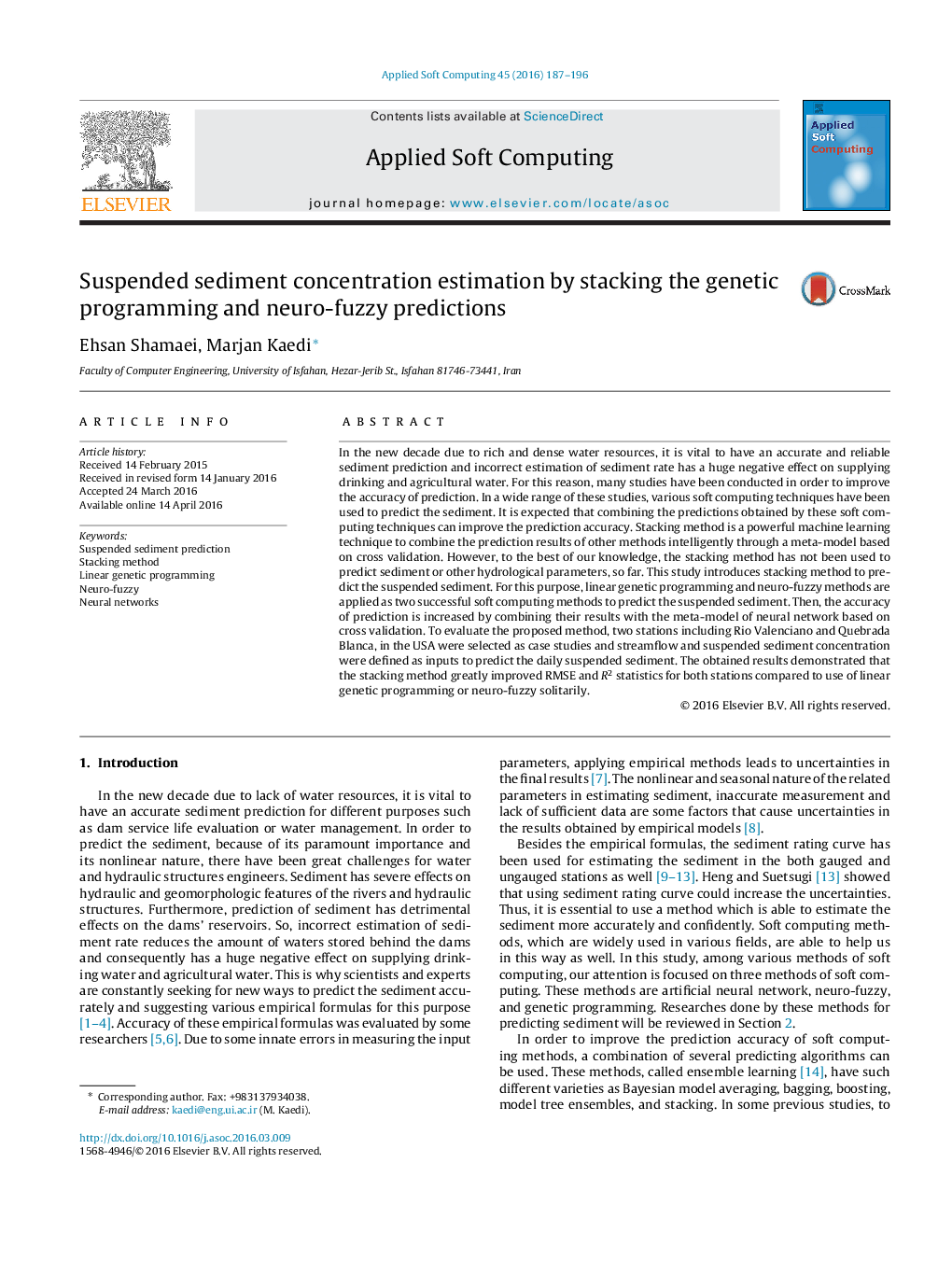| کد مقاله | کد نشریه | سال انتشار | مقاله انگلیسی | نسخه تمام متن |
|---|---|---|---|---|
| 494597 | 862800 | 2016 | 10 صفحه PDF | دانلود رایگان |
• We present a new approach based on stacking to predict the suspended sediment.
• A neural network is used as a meta-model of the stacking method.
• The genetic programming and neuro-fuzzy results are stacked via the meta-model.
• Streamflow and suspended sediment are used as input data of model.
• The results indicate that our method greatly improved the prediction accuracy.
In the new decade due to rich and dense water resources, it is vital to have an accurate and reliable sediment prediction and incorrect estimation of sediment rate has a huge negative effect on supplying drinking and agricultural water. For this reason, many studies have been conducted in order to improve the accuracy of prediction. In a wide range of these studies, various soft computing techniques have been used to predict the sediment. It is expected that combining the predictions obtained by these soft computing techniques can improve the prediction accuracy. Stacking method is a powerful machine learning technique to combine the prediction results of other methods intelligently through a meta-model based on cross validation. However, to the best of our knowledge, the stacking method has not been used to predict sediment or other hydrological parameters, so far. This study introduces stacking method to predict the suspended sediment. For this purpose, linear genetic programming and neuro-fuzzy methods are applied as two successful soft computing methods to predict the suspended sediment. Then, the accuracy of prediction is increased by combining their results with the meta-model of neural network based on cross validation. To evaluate the proposed method, two stations including Rio Valenciano and Quebrada Blanca, in the USA were selected as case studies and streamflow and suspended sediment concentration were defined as inputs to predict the daily suspended sediment. The obtained results demonstrated that the stacking method greatly improved RMSE and R2R2 statistics for both stations compared to use of linear genetic programming or neuro-fuzzy solitarily.
Figure optionsDownload as PowerPoint slide
Journal: Applied Soft Computing - Volume 45, August 2016, Pages 187–196
